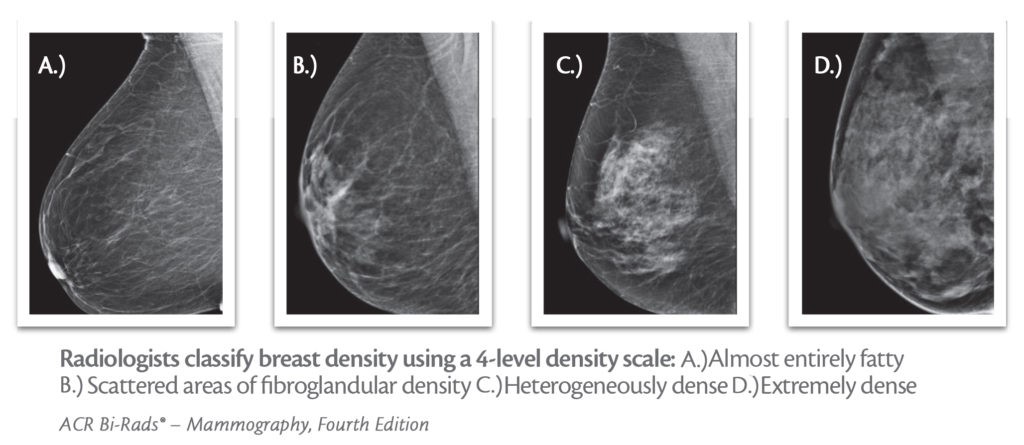Little Foggy on What Breast Density Means? Here's a Clearer Picture.
posted by JaMae Dau on Monday, March 11, 2019
Think of the last time you drove on a foggy day. In areas where the fog was light or non-existent, you could see well. Shapes and objects were easily identifiable. However, when you ran into patches of dense fog, visibility decreased. It was harder to make out shapes and recognize objects.
Chances are your breasts have never been compared to fog before, until now. Like the density of fog, dense breast tissue also decreases visibility when mammography images are taken. Fortunately, 3D mammography technology enhances those images, providing multiple images which allow the radiologists to look through each layer of your breast image to see if there are any concerns than may have been obscured. And, when you combine that technology with experienced registered mammography techs who know how to position patients for both maximum comfort and quality imaging, the results are optimal images for better diagnostic capabilities.
Women have heard for years that the density of their breast tissue may impact their mammogram, yet often women weren’t sure of the level of density of their breast. As of March 1, 2018, all Iowa facilities providing mammography services must notify patients of their breast density in accordance with a new regulation from the Iowa Department of Health.
Following a mammogram, patients receive a letter sent directly to their homes by the Spencer Hospital mammography department to inform them of their mammogram results and tissue density, which is classified on a 4-level scale.
In sticking with the weather analogy, I often say “Breast are like snowflakes; no two are alike.” Not only are each women’s breast uniquely theirs, those breasts also change over the years, which means your breast density can vary from one mammogram to the next.
What is breast density?
Breasts are made up of a mixture of fibrous, glandular and fatty tissue. Your breasts are considered dense if you have a lot of fibrous or glandular tissue (dense) but not much fat (not dense). Breast density is measured by how the breast appear on a mammogram rather than breast appearance, which means you can’t tell my looking at them out the outside.
Why does breast density matter?
Dense breast tissue is normal; 40 percent of women age 40 years and older have dense breasts. However, it may make interpretation of mammograms more difficult. Dense tissue can hide a breast cancer at an early stage. Having dense breast tissue may increase your risk of breast cancer.
How do I know if I have dense breast tissue?
Breast density is determined by the radiologist who reads your mammogram. There are four categories of mammographic density. The radiologist decides which category best describes your breast tissue density.

Does 3D mammography provide better imaging for dense breast?
3D mammography allows the radiologist to examine the breast tissue layer by layer, exposing any abnormalities in the tissue which may not be easily visualized in a traditional two-dimensional mammogram.
What do I do if I'm worried about my breast density?
Together with your provider, you can determine if additional screening options are appropriate for you.
The imaging department at Spencer Hospital can help you take the preventative steps needed to stay healthy. Learn more about our mammography services today and schedule your 3D mammogram by contacting (712) 264-6500.
- women's health